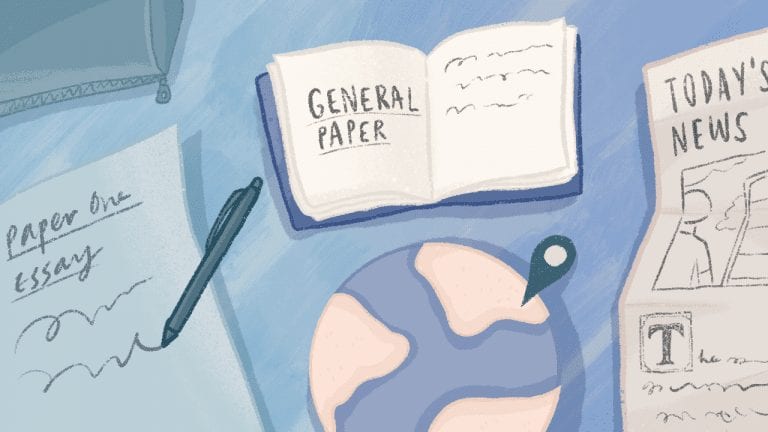
Writing an Effective Academic Paper

Most students are already aware of how to make an essay as it is taught to them during primary and secondary school. However, when they move up towards higher education, they will encounter the upgraded version of the essay: the academic paper.
An academic paper is used by individuals when they want to compose a piece which can be useful to the academic field. Academic papers are often used and found in most research papers as the main medium to express one’s findings or can also serve as supporting documents to back up a claim made by an individual.
How academic papers differ from regular essays
An academic paper will display some similarities to a regular essay, however there will be noticeable differences between the two forms of writing. These differences can often come in the form of the purpose they serve, or the alignment of the text used. Listed below are even more examples of the differences of an academic paper to a regular essay.
1. Claims need to be supported by evidence
The first and most noteworthy difference an academic paper has over a regular essay is that all claims within an academic paper needs to be backed up and supported by verified evidence. One must not invoke their own opinion on a subject matter without any evidence to support their statement, unless it was a conclusion reached through the use of the scientific method.
In a regular essay, you will still need to provide evidence for your claims, but you will have the freedom to express your personal opinions on the subject matter. In an academic paper, you are limited to straight facts and figures to support your claim and rarely have the chance to state your own personal opinion on whatever topic you are writing an academic paper.
2. Narrates differently
A regular essay can utilize the first-, second-, and third-person point of view without any problems. However, an academic paper is a completely different story. An academic paper can only utilize the third person point of view to narrate events which have been recorded to serve as evidence.
The third-person point of view is used to separate the author from any events that was recorded and stated in the paper. This is not to make the author completely unrelated to the paper and have his credibility stolen, but is instead aimed to limit the chances of opinionated and biased statements that may be made by the author when writing an academic paper.

3. Avoidance of future tense
Academics papers are also notoriously known for its limited use of the future tense. This is due to the fact that most of the evidence and supporting statements included in an academic paper was already published and verified before the author wrote the academic paper. This would mean that an academic paper will often use the past participle or present tense of the words used in them as the events have already happened or is still happening as of the moment that the author is writing his paper.
The future tense of words will be rarely seen in an academic paper, but it will still appear from time to time. Whenever an academic paper has a recommendation segment included, this will often use the future tense of the words as it is the author’s contribution to the next author that may continue to work on the topic.
4. Use of technical terms
Academics papers are also notoriously known for its limited use of the future tense. This is due to the fact that most of the evidence and supporting statements included in an academic paper was already published and verified before the author wrote the academic paper. This would mean that an academic paper will often use the past participle or present tense of the words used in them as the events have already happened or is still happening as of the moment that the author is writing his paper.
The future tense of words will be rarely seen in an academic paper, but it will still appear from time to time. Whenever an academic paper has a recommendation segment included, this will often use the future tense of the words as it is the author’s contribution to the next author that may continue to work on the topic.
How to create an effective academic paper
The creation of an academic paper will be a tedious and time-consuming task. However, all the effort you will put into creating one will be all worth it once your paper gets published by your university. Here is a step-by-step process that will walk you through the creation of your very own academic paper.
1. Pick a topic
The first and most important step to take when creating an academic paper is choosing the right topic to write about. This will be the foundation of your academic paper and will be a huge deciding factor that your professors will consider if they want to publish your paper or not.
You need to choose a topic that is time-sensitive and relevant to the population you are in. A topic that is time-sensitive is a topic that is currently a pressing issue. These could be certain events or tragedies that have recently happened or could also be the current condition of a certain structure.
One must also consider to make the topic they write about a topic that is relevant to the population they are in. This will ensure a steady supply of respondents whenever the author feels like doing a survey.
2. Decide on what you want to do
The next step after deciding the topic you will write about is to decide the purpose of your academic paper. Do you wish to simply inform the population of your findings, or do you want to persuade the readers? You should then write your academic paper accordingly to the purpose you had envisioned.
By doing so, you will be able to identify the flow of your academic paper and determine the parts that should be given more focus and attention. This is an important step to make sure your academic paper remains consistent to its purpose and becomes less likely to stray from the topic you have decided on.

3. Write down ideas
After constructing the foundation of the academic paper, the next step is to gather and write down as much ideas and supporting details as you can. This will allow you to gather everything that you may need when you create your academic paper and will make it easier to retrieve any related papers or data which you may need.
This will also ensure that you will have more time to revise and review your paper later on as you will not be scrambling the internet all over again because you forgot the URL of an academic paper which may be useful for your academic paper.
4. Create a draft
The creation of a rough draft comes after the collection and recording of ideas and related literature. This will allow the academic paper to gain a rough skeleton of what will become its final form.
By creating a rough draft for your academic paper, you will be able to determine if the flow of your paper runs smoothly or if there are certain areas which lack support. This will also allow you to rearrange ideas easier as you will be able to see the entirety of an academic paper which is currently free from the vast number of technical terms to be added later on.
5. Arrange ideas accordingly
By creating a draft prior to the creation of the actual academic paper, one can easily arrange ideas accordingly to ensure the fluidity of the academic paper’s contents. One can also use this to create sublime segues to the next topic without having making the reader feel like they jumped a few parts.
Place ideas where they rightfully belong. You cannot be in the middle of your conclusion and introduce a brand-new idea just because you forgot to mention it in the body of the academic paper. Arranging ideas properly not only leads to a great academic paper, but will also enable the readers to have an easier time understanding the contents of the paper as it will be presented to them in an orderly manner.
6. Re-read your paper and edit mistakes
The next thing you should consider when creating your academic paper is to reread the contents of said paper and look for minor errors or typos that may have occurs. You must be sure that you submit a perfect copy of the paper without any flaws and misspelled words as this will be the paper that will be hopefully published by your university.
This will also allow you to gain a bird’s eye view of the academic paper to ensure that everything flows smoothly and the topics are presented and justified accordingly. And if errors were found, then do not hesitate to edit or revise certain parts of the paper to make sure that it is as flawless and perfect as possible.
7. Repeat step 6
The final step in the creation of your academic paper is to repeat the process of step 6 as much as you need to. There will be instances where certain errors maybe skimmed through and go by completely unnoticed. To avoid going through the trouble of editing the paper after it was published, you will need to re-read and edit the errors until there are none left.
If you liked what you have read and want to learn more, then consider visiting us at FamilyTutor. FamilyTutor is a leading home tuition in Singapore which employs only the best tutors to give you quality private tuition. All it takes is a few clicks of a button and you will be set to be tutored by one of Singapore’s best tutors.

Carelle
Carelle is a teacher who has been through the ups and downs of the teacher and learner life. She wishes for every learner to gain educational satisfaction that will help embody the people they want to be in the future.
Tell Carelle Below What You Think About Her Post!

About FamilyTutor!
FamilyTutor is an established home tuition agency in Singapore! We match suitable home tutors for our clients not just to improve the students' academic grades, but also to build a strong rapport and meaningful relationship with the students and even the their whole family. FamilyTutor put every student in good hands!
If you need an excellent home tutor, feel free to call/WhatsApp us at +65 8777-2168! Our matching service is free!
Related Posts!
Follow Us On Facebook!
Our Service!
- Home Tuition in Singapore
- Home Tutor in Singapore
- Home Tuition Rates in Singapore
- Preschool Home Tuition
- Primary School Home Tuition
- PSLE Home Tuition
- Secondary School Home Tuition
- ITE Home Tuition
- N Level Home Tuition
- JC Home Tuition
- A Level Home Tuition
- Polytechnic Home Tuition
- University Home Tuition
- A-Math Home Tuition
- Biology Home Tuition
- Chemistry Home Tuition
- Chinese Home Tuition
- Economics Home Tuition
- English Home Tuition
- Geography Home Tuition
- H2 Chemistry Home Tuition
- Higher Chinese Home Tuition
- Hindi Home Tuition
- History Home Tuition
- IB Chemistry Home Tuition
- IP Chemistry Home Tuition
- IP Math Home Tuition
- IP Home Tuition
- JC Chemistry Home Tuition
- Literature Home Tuition
- Malay Home Tuition
- Math Home Tuition
- O Level Chemistry Home Tuition
- O Level Math Home Tuition
- O Level Physics Home Tuition
- Online Home Tuition
- Physics Home Tuition
- POA Home Tuition
- Science Home Tuition
- Tamil Home Tuition
Education Levels
National Exams
Math & Science Subjects
Language Subjects
Japanese Tuition
Korean Tuition
German Tuition
Humanities Subjects
Social Studies
Chinese Literature Tuition
About Us
FamilyTutor is an established and the people’s favourite home tuition agency in Singapore! We match a suitable tutor for you not just to improve the student’s grade, but also to build a good rapport and meaningful relationship with the student and even with the student’s whole family! With FamilyTutor, every Singaporean son & daughter is in good hands.
Contact Us
- 8777 2168
- 8777 2168
- Mon-Sun 9am-10pm (Including PH)
- contactus@familytutor.sg
- 17 Petir Road Singapore 678278



